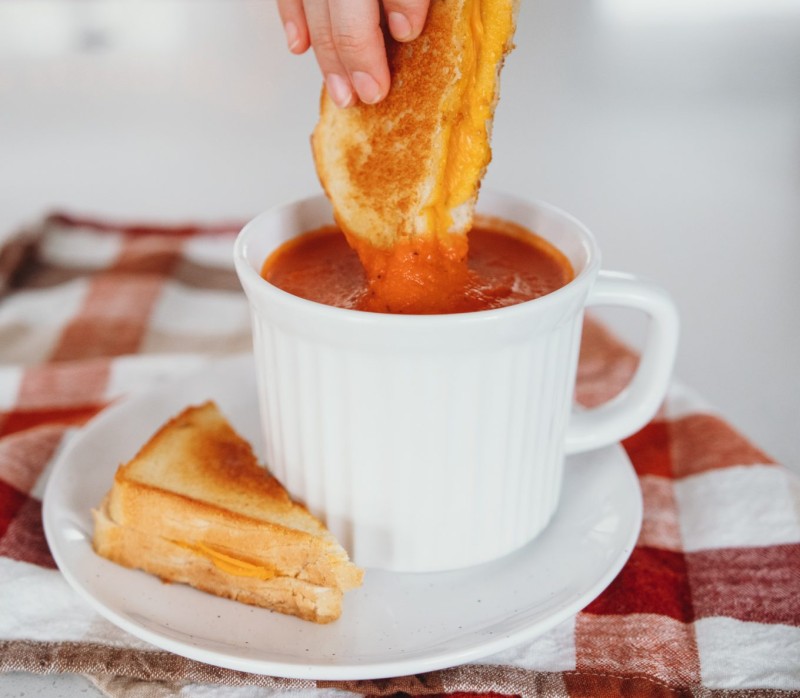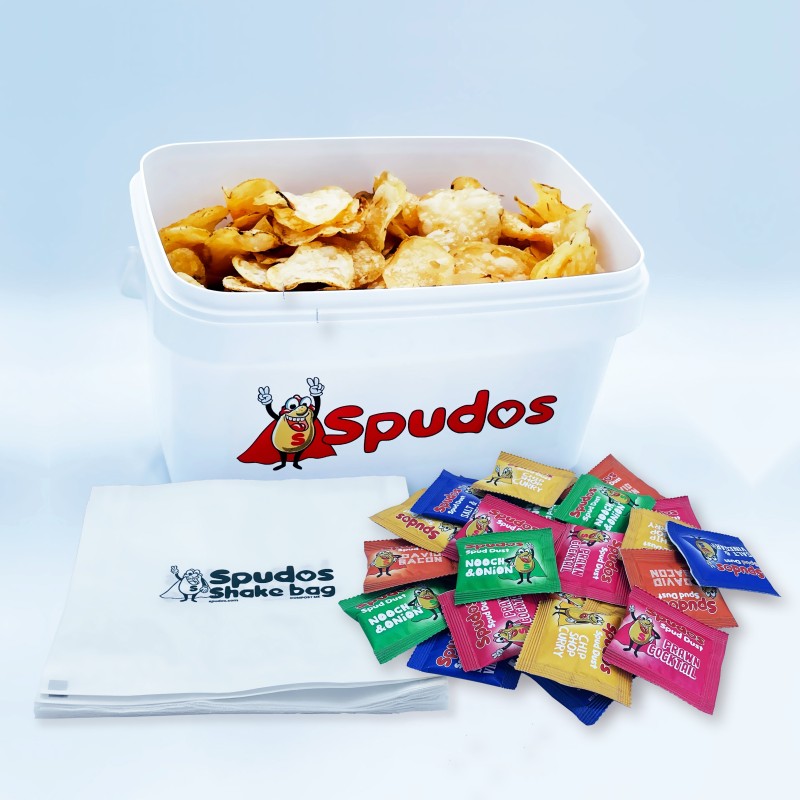The Many Benefits of Breastfeeding Babies
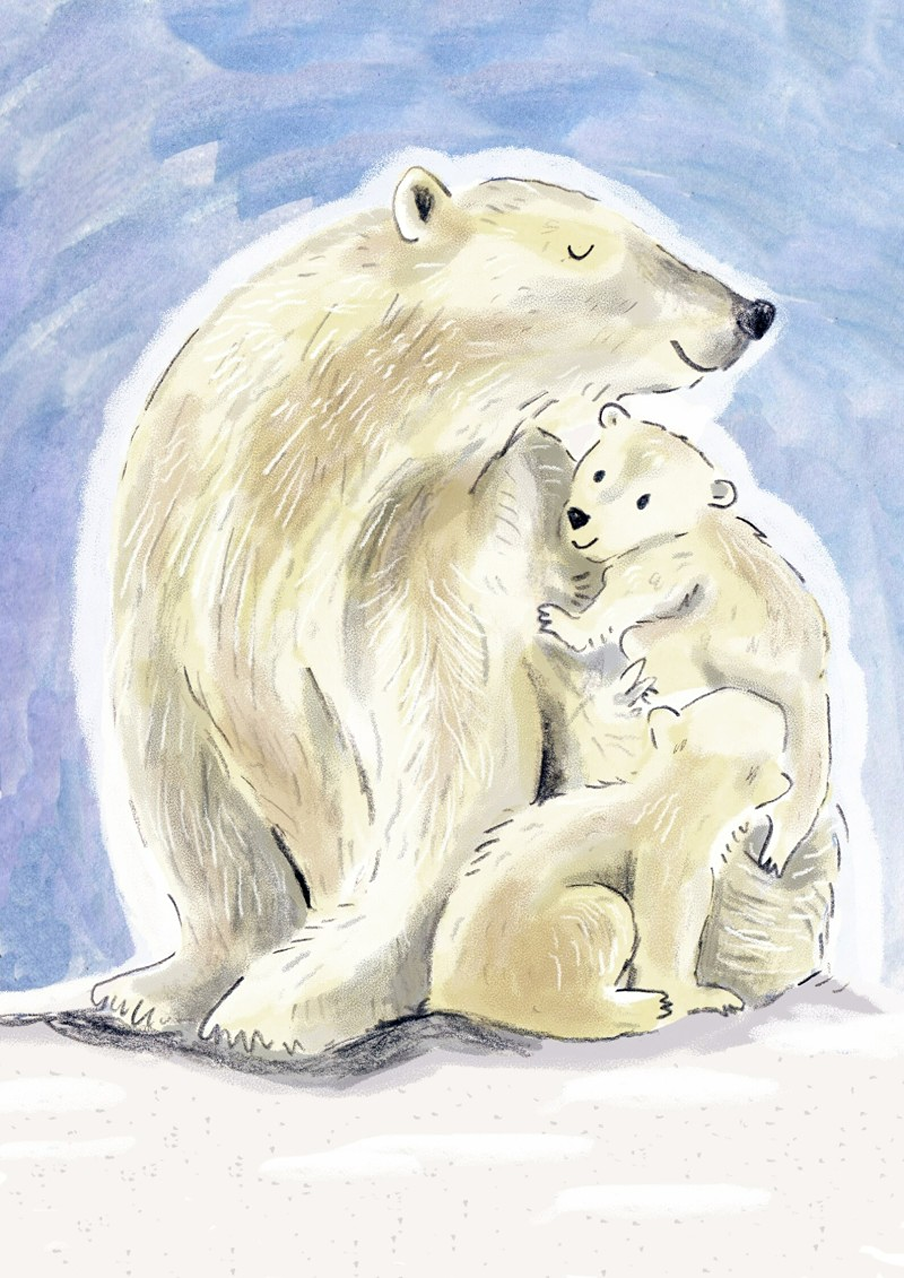
England has one of the lowest breastfeeding rates in the world, yet around 90% of women are able to nurse naturally. It’s of course your choice, but NHS says that breast milk is not just free, but the best nutrition-wise.
And offers better protection from SIDS (sudden infant death syndrome), type-1 childhood diabetes and leukaemia, and also better protects against infections and bowel problems for babies with Down Syndrome.
All health professionals recommend breastfeeding for the first six months (which is why you’ll always hear formula ads saying this). But there are benefits to breastfeeding until weaning, like helping babies to digest food, and avoiding issues with dairy and soy allergies.
Parents can bond with children with bottle-feeding, but breastfeeding also releases oxytocin, a calming hormone, and can even help to return the uterus to its normal size, and helps reduce later life risks of breast and ovarian cancer, osteoporosis, diabetes and heart disease.
Colostrum (the thick liquid produced just after birth) is full of antibodies, protein, vitamins, sugar and fat, crucial to building a child’s immune system.
It also helps flush out sticky poo that babies excrete in the first couple of days of life. Colostrum coats and protects your baby’s gut. Cordelia Uys (breastfeeding counsellor)
You are allowed by law to breastfeeding in public laws. Employers must offer a resting space (like a private room, not public toilets).
-
- Your GP and midwife should be able to help
- National Breastfeeding Helpline offers a free phone line
- The Art of Breastfeeding and Practical Breastfeeding are two good books, by experts covering basic information and dealing with common challenges like latching, mastitis and cracked nipples.
Foods to Avoid While Breastfeeding
As with pregnancy, there are certain foods and drinks it’s best to omit. These include:
- Caffeine. Best omitted entirely. If you do drink it, no more than 300mg a day (2 mild mugs of tea or one coffee, cola or chocolate – note chain stores tend to be higher in caffeine.
- Alcohol. Again, it’s best to avoid entirely. If you do drink, wait a few hours (or express milk beforehand, to give later on). Never share a bed (nor sleep on the sofa) with a baby if you (or anyone) has been drinking. This is linked to SIDS (sudden infant death syndrome).
- Limit (or omit) fish. If you eat fish, no more than 2 weekly portions of oily fish (fresh tuna, salmon, trout, mackerel, herring, sardines, pilchards). And no more than 1 weekly portion of swordfish, marlin or shark. There are plenty of plant-based fish alternatives in shops today. It’s easy to eat omega 3s without fish and mercury.
- Peanuts? Health experts say that there’s no evidence that you need to avoid peanuts or peanut butter, unless you’re allergic. But do choose organic brands free from palm oil.
- Dairy milk? Many babies are allergic or intolerant to cow’s milk and/or lactose, so your GP or midwife may recommending avoiding it, for some babies with eczema, blocked nose, skin reactions, tummy ache or constipation. Again, there are plenty of plant-based calcium-rich foods (green leafy veg, dried figs, calcium-enriched foods).
How to Prevent & Treat Colic
Colic is a common condition for young babies, which usually remedies itself within a few months, usually recognised by crying for hours with clenched fists and arched backs (and knees pulling into tummy). It’s caused by windy tummies, being bored or being too hot or cold:
Crib death charities recommend removing extra clothing like hats when coming into warmer temperatures (inside, cars etc). The Lullaby Trust has more info on SIDS prevention.
Sometimes colic can be remedied by holding your baby upright when feeding, with regular ‘burping’ (babies should always sleep on their backs anyway, to prevent SIDS). NHS says NOT to raise the head of your baby’s cot or Moses basket.
For warm baths to soothe colic, run cold water first (then add hot water), testing with wrist or elbow. Keep baby’s head clear of water. Don’t bathe after feeds, or if hungry/tired.
NHS has a good 2-minute video. Never leave babies or children alone for a second. Avoid baby seats, these can quickly detach, and drown babies in just a few centimetres of water.
Why Less Breastfeeding in England?
So why does England have such low breastfeeding rates, when NHS and WHO both recommend it as the best option? In Norway, 70% of babies are breastfed, yet just 30% of UK babies (and hardly any at 12 months, compared to 99% in Senegal).
Not breastfeeding also leads to more ear, chest and throat infections, which adds £50 a million to NHS budgets. Breastfeeding counsellor Cordelia Uys believes that considering the UK gets fairly good maternity leave, the only reason is simply culture, where women’s breasts are seen more as objects for ‘lads’ mags) rather than their intended purpose.
Breastfeeding is a learned culture (all species teach new mothers how to breastfeed). The sad story of a zoo gorilla proves this. Her baby died, as she had no wild gorillas to teach her how to nurse. When her second baby was born, local mothers visited and breastfed in front of her. She copies them, and her second baby survived.
When her second baby was born, local mothers visited, and breastfed in front of her. She copied them, and her second baby survived.
Although formula companies have to legally state that breast milk is the best choice for the first six months, most then start promoting formula, when it’s not needed. The two main brands ((Cow & Gate and SMA) are respectively owned by Danone (a massive plastic pollutor) and Nestlé (one of the world’s most boycotted companies).
Getting breastfeeding advice from formula companies, is like chickens getting advice from foxes. La Leche League International
How to Express and Store Breast Milk
![]()
The chemical BPA is now banned for plastic baby bottles, but you can find good alternatives, to store expressed milk. Dr Brown’s Glass Baby Bottles feature award-winning vent systems to reduce colic, spit-up, burping and gas by eliminating air bubbles. They are heat-resistant, with silicone covers to keep hands cool.
Despite saying the bottles are microwave-safe, never microwave baby milk (or pet food). As it heats differently, and causes ‘hot spots’ that could scald the mouth and throat.

MyMilk Breast Milk Trays were created by a mum and her engineer husband. Originally designed to store frozen soup (you can buy those in Lakeland stores), these are presently only sold in the US, but it’s a one-time purchase (and once your baby is weaned, you can use them to store frozen minced garlic or ginger).
Made from silicone, each pack includes 2 reusable trays to freeze breast milk, with a storage guideline magnet. Just pour breast milk into the tray, close the lid and store in the back/bottom of the freezer (not the door, due to variable temperatures), with the date labelled.
When you need breast milk, drop the cubes in your baby bottle, then thaw overnight in the fridge (or place in warm – not hot – water, ready to use). You can sanitise the tray in boiling water.
Donate to a Human Milk Bank
Around 2% of new mothers are unable to breastfeed, due to either medical conditions or having had mastectomies. As breast milk is on ‘supply and demand’ (so you never run out), the best choice for these babies is by far donated breast milk from other mothers.
Especially for preemies (premature babies) who usually have delicate guts. Donated (frozen) breast milk is screened (just like blood for AIDS, hepatitis, syphilis etc) then collected from your home. Just a few ounces can sometimes save the life of a premature baby.
You cannot donate breast milk if you (or someone you live with) is a smoker or vaper, and you must inform of medications. On acceptance, you are sent a pack with a thermometer to ensure your freezer is the correct temperature. Find your local milk bank.
If Used, Which Baby Formula to Trust?
If you use infant formula, transition gradually, to avoid upsetting delicate tums. For dairy allergies, talk to your midwife as there are few commercial options available, in the UK. Abroad:
Else Nutrition (US) is approved by doctors, created to help a child with serious allergies, and is ‘shaking up a stagnant industry’ with a Toddler Formula based on buckwheat/almonds that is rich in fatty and amino acids. It contains as much of all the normal nutrients in cow’s milk, but without the dairy.
In Australia, Sprout Organic was again created when a woman had to give up nursing, due to severe mastitis. This brand again has doctor approval, sold as a range for babies, toddlers and children’s shakes. It’s made in a facility that process dairy and soy, so not for allergies.
If you use dairy formula, Kendamilk is made with organic milk from the Lake District, run by a family firm and formulated by expert nutritionists. It’s also free from palm oil, fish oil and cheap fillers.
Issues with Marketing of Formula Milk Abroad

World Health Organisation is at the forefront of a campaign to end the exploitative and aggressive marketing of formula milk to mothers in developing countries.
In a survey with UNICEF, it found that over half of parents and pregnant women in the world have been targeted from formula milk companies, often breaching international standards on infant feeding. All to help profit, rather than listen to science from health professionals.
Some formulas companies give ‘free’ formula to poverty-stricken new mothers in African hospitals. When they return home they can’t afford to buy it. So sometimes use lesser amount or mix it with dirty water. Either way, this can make babies or ill, or some die. WHO estimates this causes up to 800,000 deaths of babies each year, who can mostly safely be breastfed.
Most African people are also lactose-intolerant, so it’s not a good idea healthy-wise, to market dairy formula anyway.
Unless there are medical reasons not to, most women can breastfeed. And the benefits of breastfeeding are widely known, both for the health of the baby and mother (including a lower risk of cancer in later life).
The formula milk industry (worth billions) often tries to influence the feeding decisions of parents, often making claims that violate the International Code of Marketing of Breast-Milk Substitutes, a public health agreement passed by the World Health Assembly in 1981.
Breastfeeding within the first hour of birth (followed by exclusive breastfeeding for six months and continued breastfeeding for up to two years or beyond) offers a powerful line of defence against all forms of child malnutrition, including wasting and obesity.
Breastfeeding also acts as babies’ first vaccine, protecting them against many common childhood illnesses. World Health Organisation
Watch Tigers, the story of how a former marketeer takes on his old employers, backed by a breastfeeding charity. When he learns that infant formula may be causing some babies to die, he immediately resigns and is now on a mission to stop the practice.
For babies in developing countries with cleft palate and other conditions that make breastfeeding difficult, medics have created Nifty Cup. This simple device lets babies ‘lap’ milk’ rather than having to use formula.
Maternity Clothing with Breastfeeding Panels

Frugi (a Cornish children’s clothing brand, we don’t recommend their footwear as it’s made with leather)) also have a range for grownups, made mostly from organic cotton. Sent in sustainable packaging.
For items that use a little elastane, launder in a microfibre filter. Launder with unscented biodegradable laundry liquid.
The Lullaby Trust has safety information on baby clothing (and bedding). Mostly to not over-heat (babies control temperature through their head and face).
Remove hats, socks and gardens when moving to warmer temperatures (including cars – don’t let babies sleep in car seats outside travel, due to the upright position not being as safe as back-sleeping).
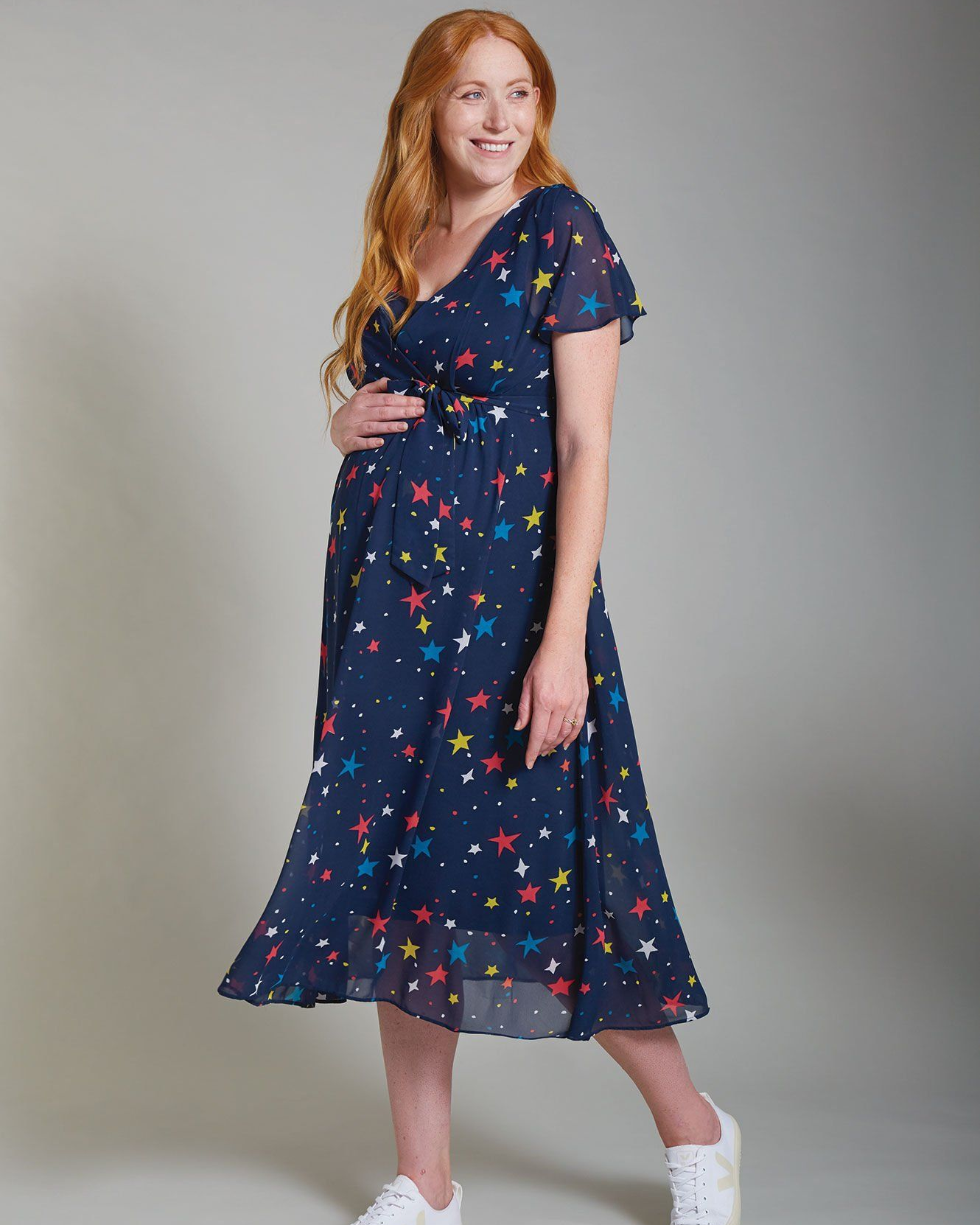
What makes these award-winning clothes so special, is that they have clever hidden panels for discreet breastfeeding, so make a good investment, after you’ve given birth.
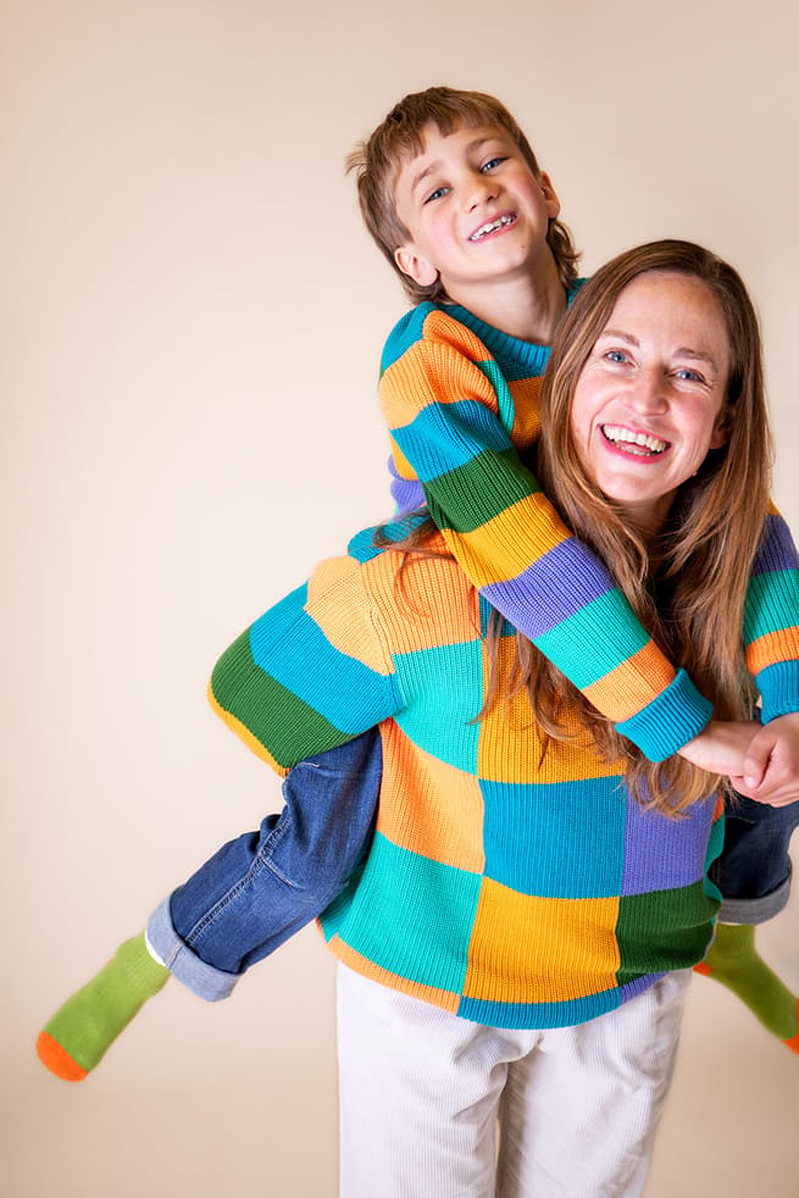
When your child is born, Frugi also offers clothes for new mums in the same organic fabrics, often with matching styles for children.
Second-Hand and Swapping Schemes
Although it’s not good to buy second-hand baby mattresses etc (due to mould risks), second-hand maternity clothing of quality is a good buy, so search for locally-owned charity shops for bargains, or online.
Another idea is ‘swishing’, which is when local friends and neighbours meet up to swap clothes they never wear, rather than throw them away. If you belong to an anti-natal class, perhaps you could get together to do the same, but for maternity wear (some may have previous clothing, from births before).
This enables everyone to find clothes they love, that cost nothing. Other than a few non-alcohol drinks and a few nibbles to snack on!


